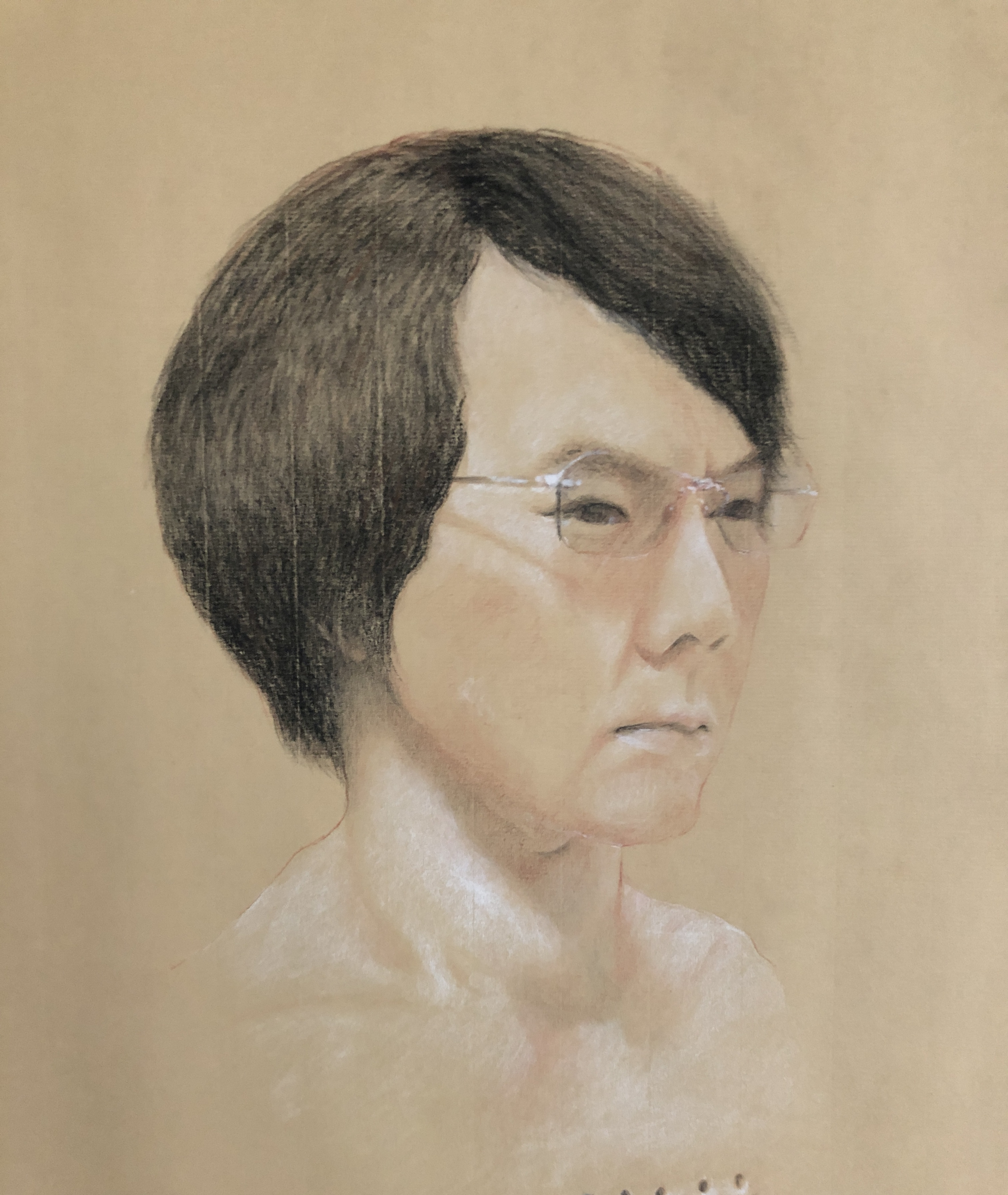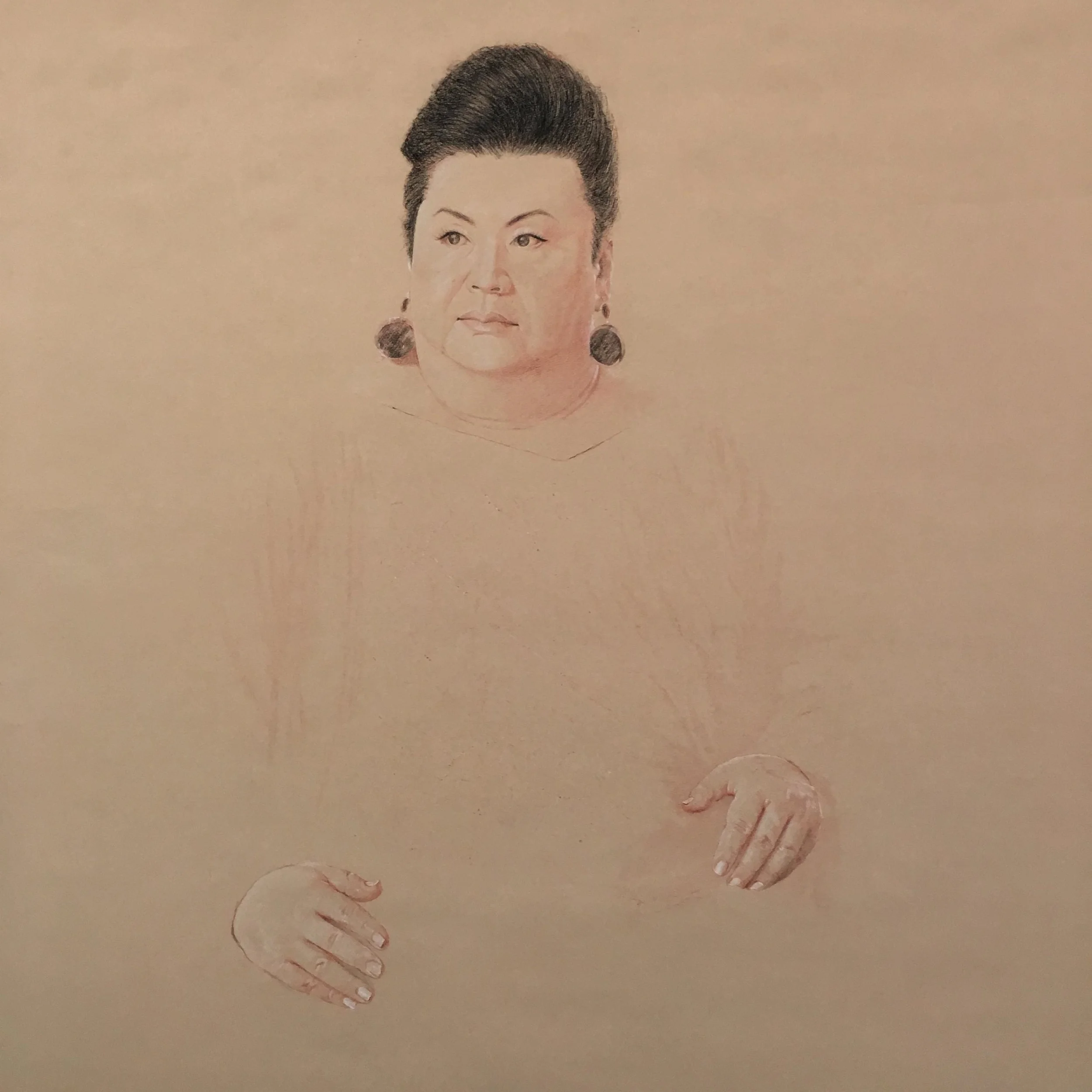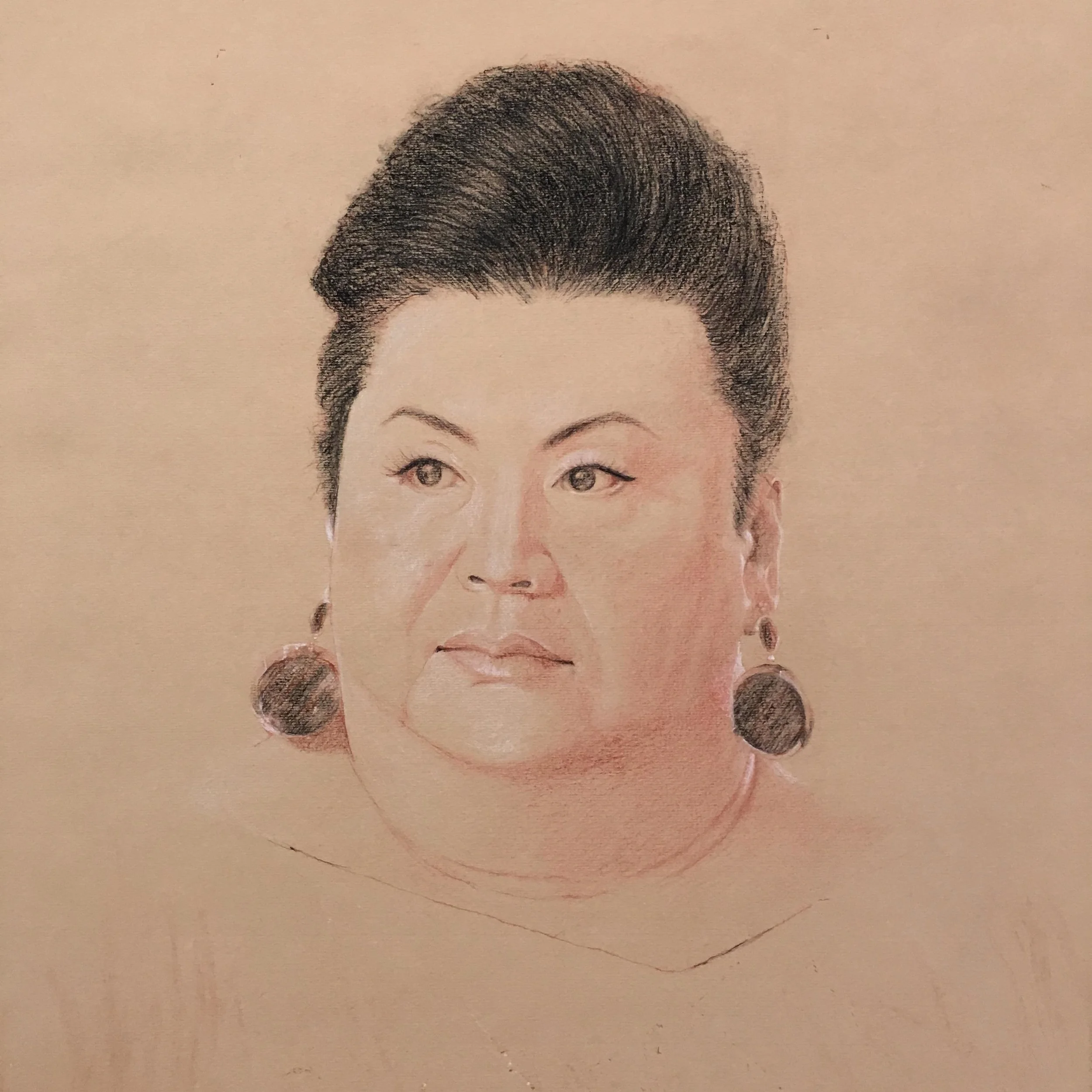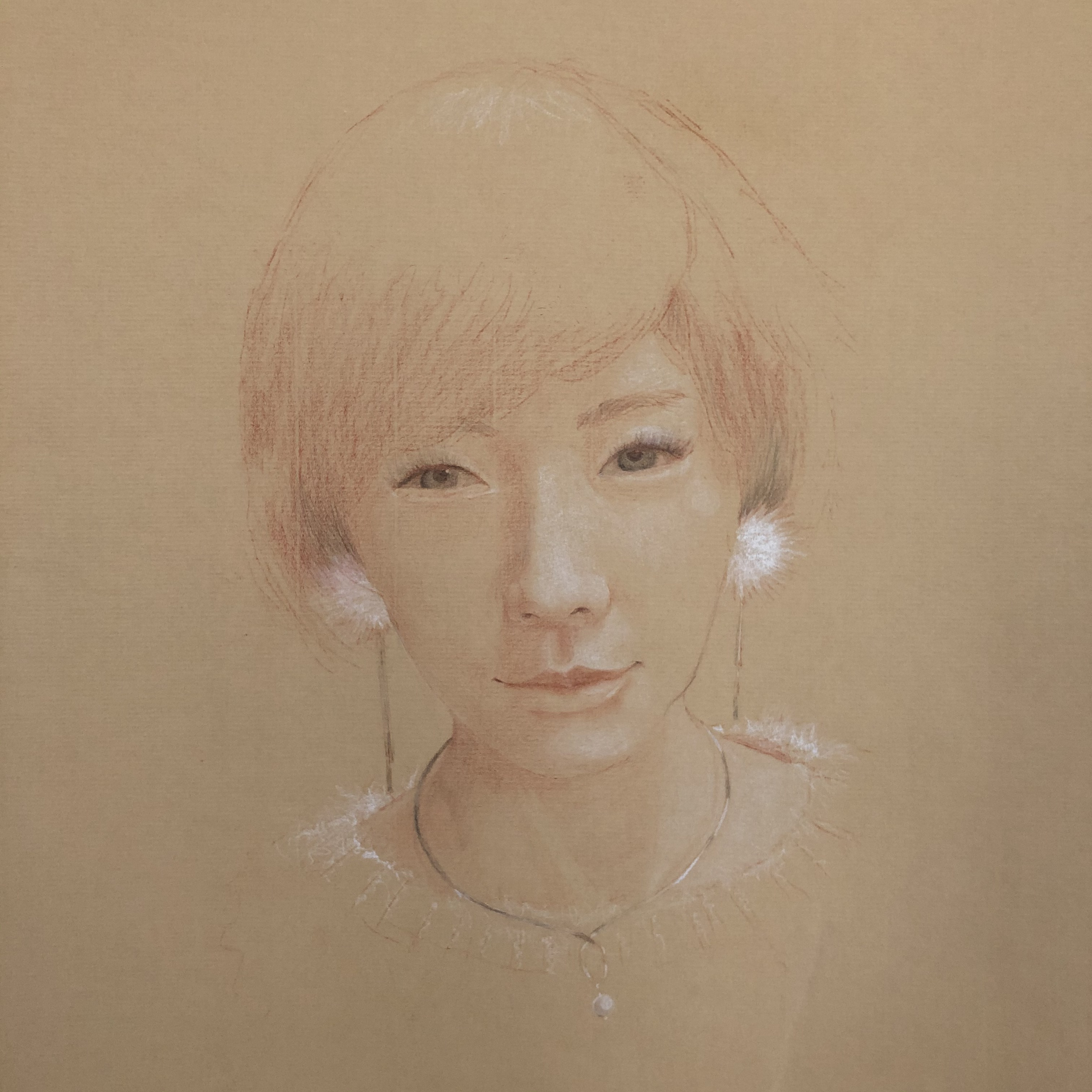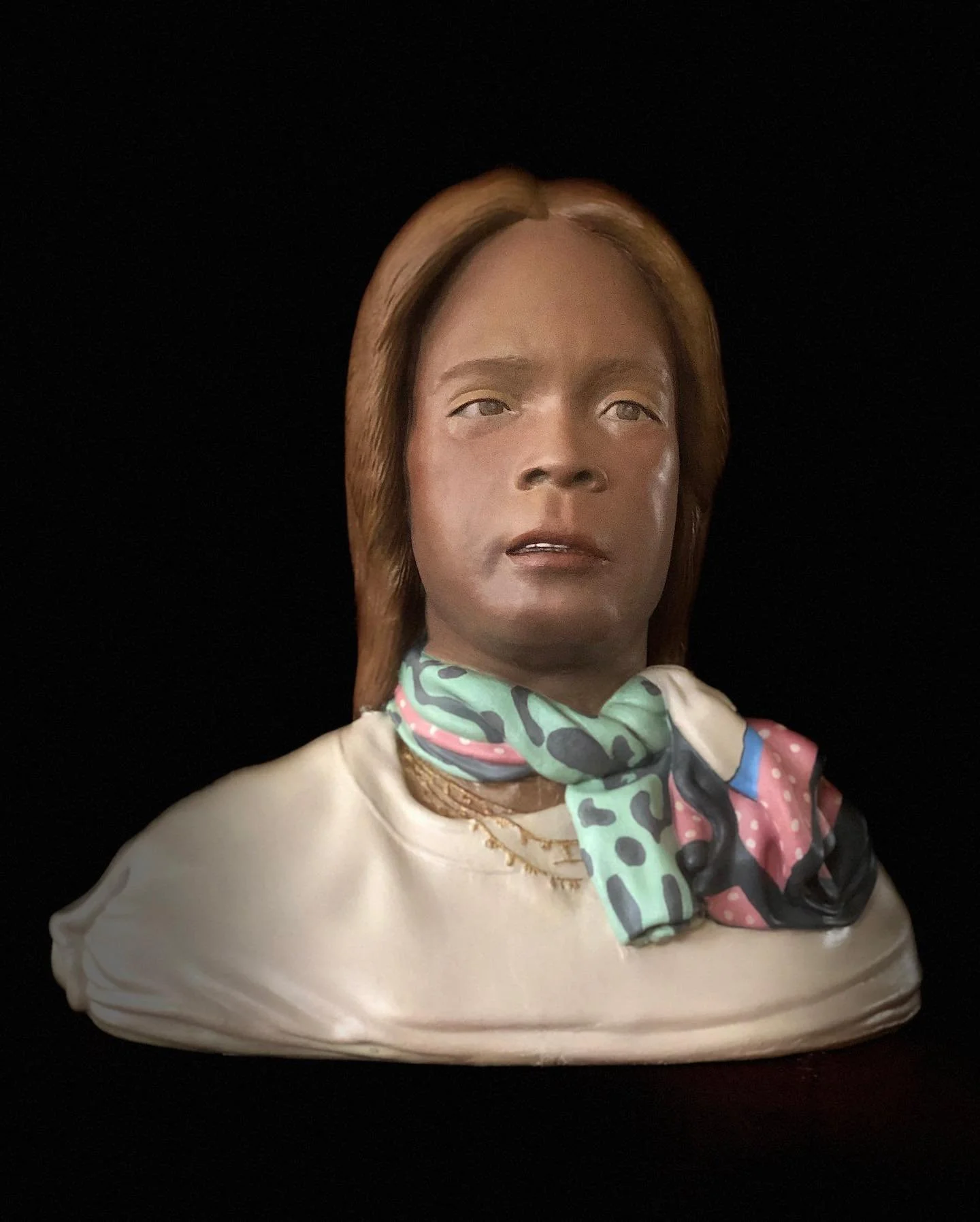One of the fascinating developments in the evolution of AI is the international pursuit of the creation of humanoid robots intended not only to physically resemble human beings as closely as possible, but to convincingly manifest emotions, and progressively acquire new knowledge and skills.
My Android Portrait Project was developed through ongoing meetings, research and interaction with humanoid robots and their creators internationally.
Art-historically, the portrait genre has been the quintessential signifier of human specialness. Its conventions were evolved over time with the goal of highlighting the uniqueness, psychological depth and nobility of the individual human being. However, the subjects of my portraits are android robots, not flesh and blood humans. These drawings invest their subjects with a degree of dignity and emotional nuance previously reserved for humans and, through bringing together the traditions of portraiture and humanoid subjects, become metaphors for the larger issue of human uniqueness, as raised by the development of AI.
My project involved another element from the tradition of portraiture: what is known as “the sitting.” I have personally met with various androids in their respective locations, where I interviewed and made sketches of them, creating a contemporary counterpart to the itinerant portrait artist's having a sitting with one of his subjects.
I have also extended the concept of android portraiture to an additional medium—specifically, sculpture, in the form of the traditional portrait bust.
Like drawn or painted portraits, the portrait bust was intended to depict a specific individual, with careful attention to both the details of their physiognomy and a nuanced evocation of their character and state of mind. Both two- and three-dimensional portraits were also used as a means to transcend mortality—to make one’s personal appearance visible to posterity—and so portrait busts were often rendered in durable types of stone, such as marble. In my practice, I have employed the use 3D-printing technology in creating the busts, and rendered them in the time-transcending material of our era: plastic.




